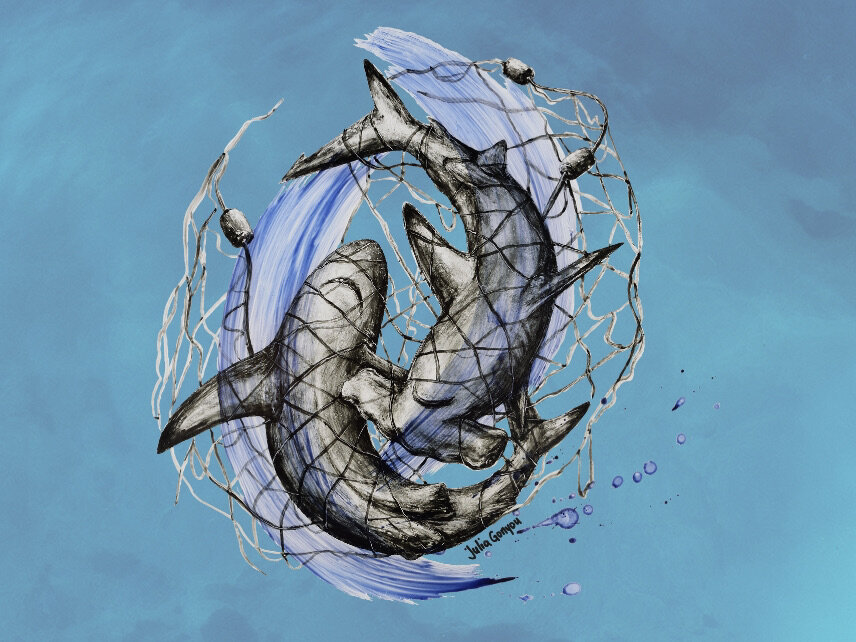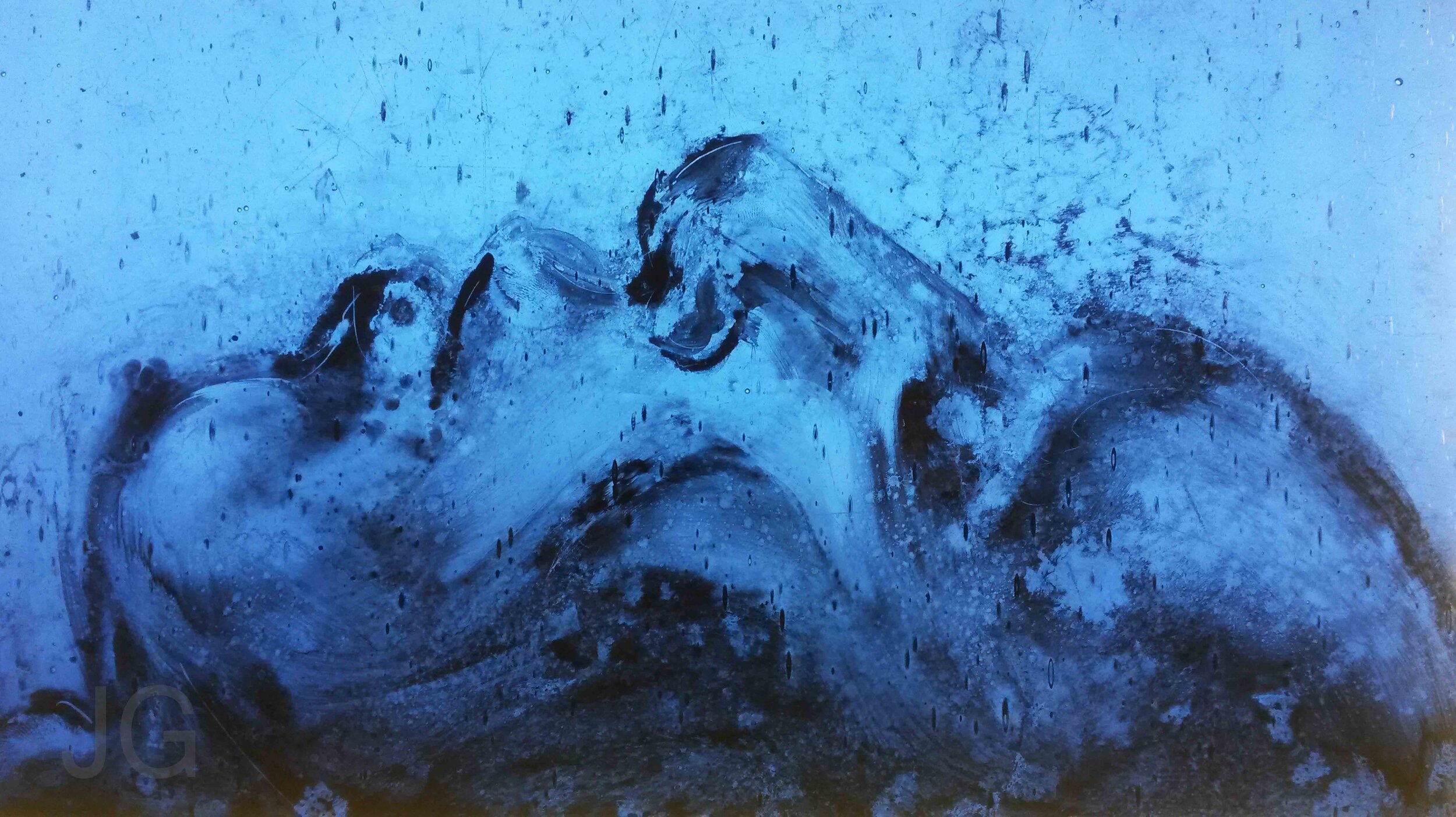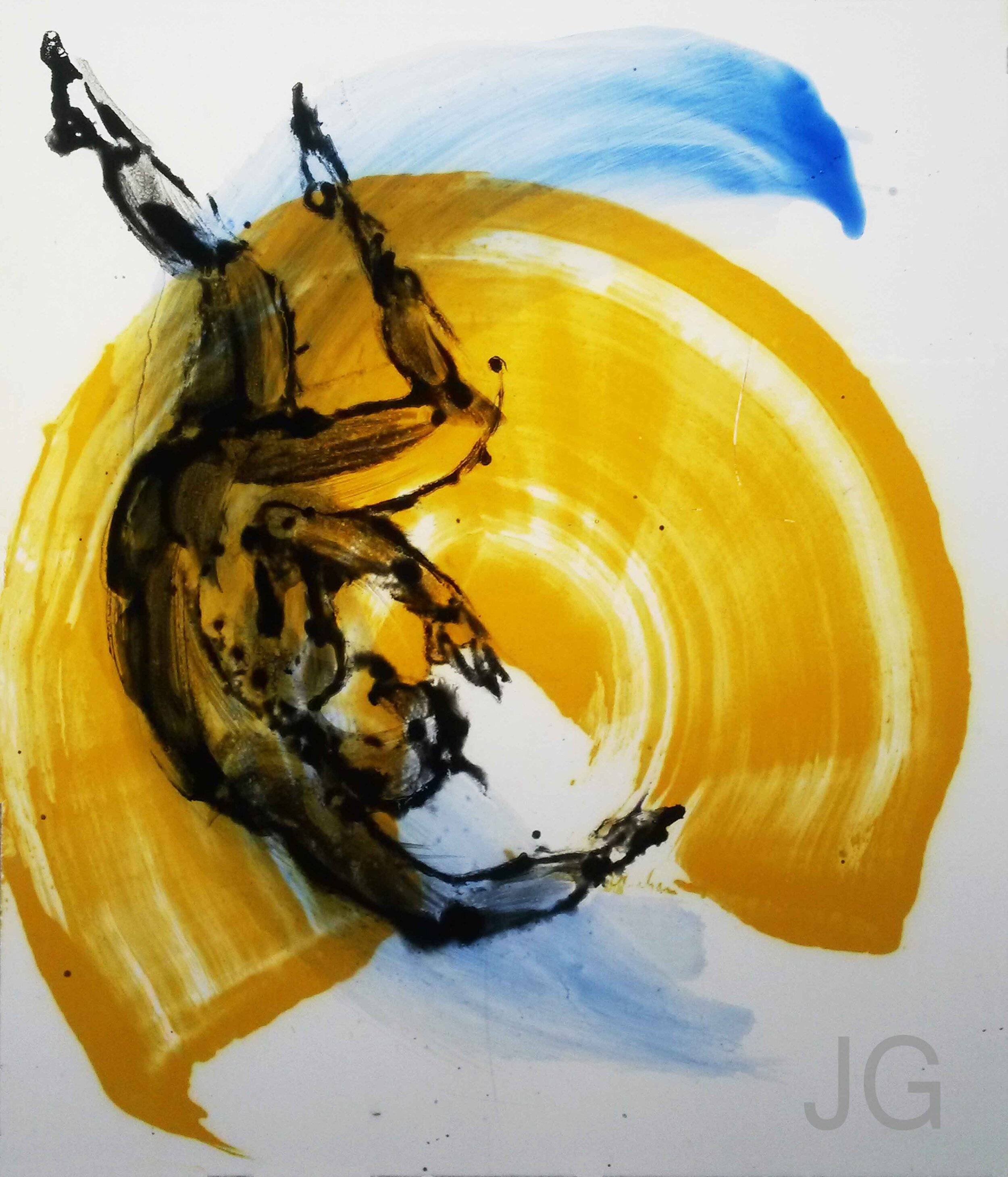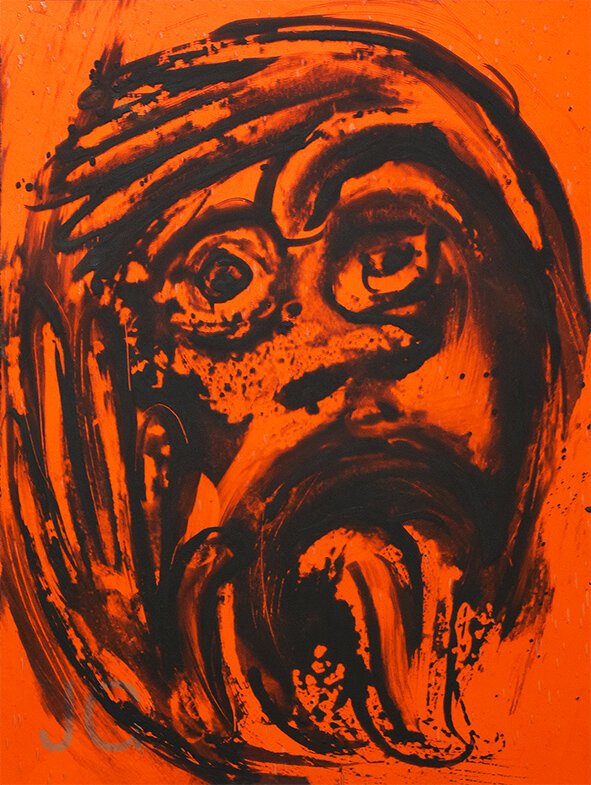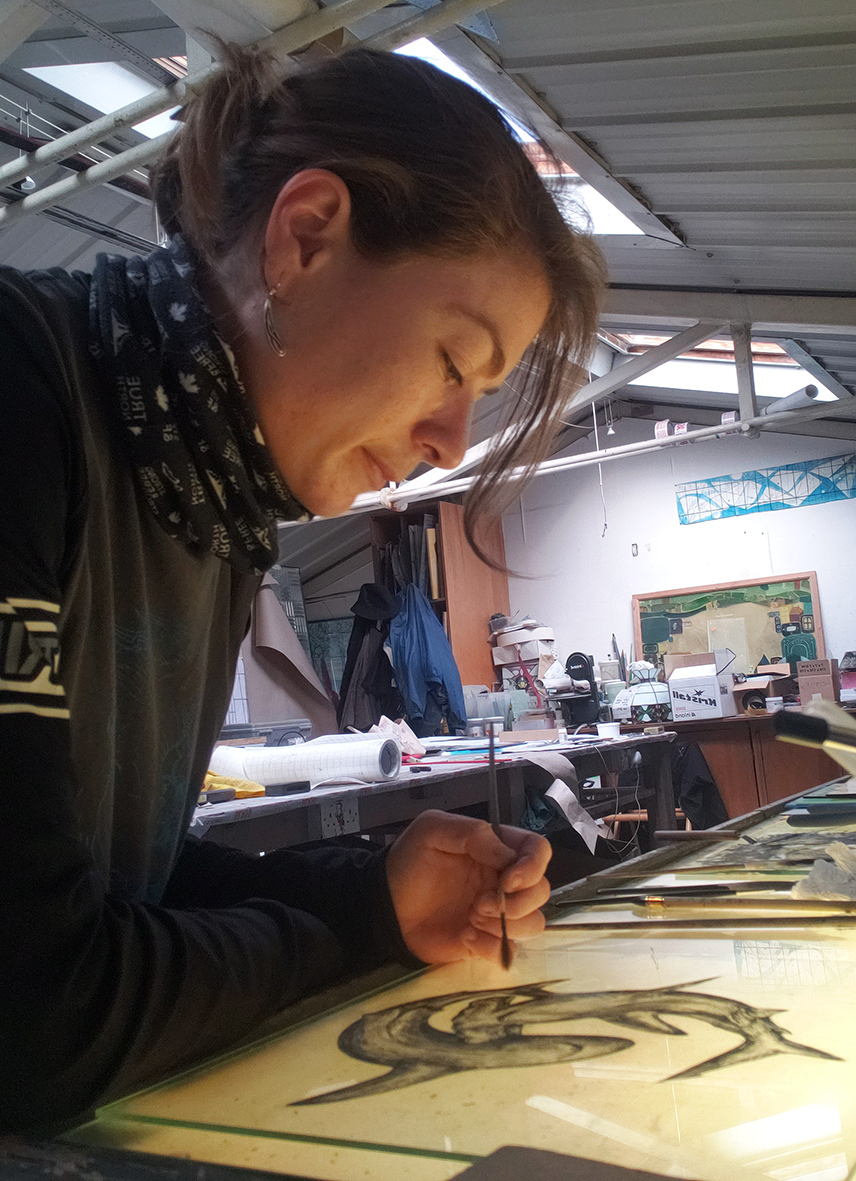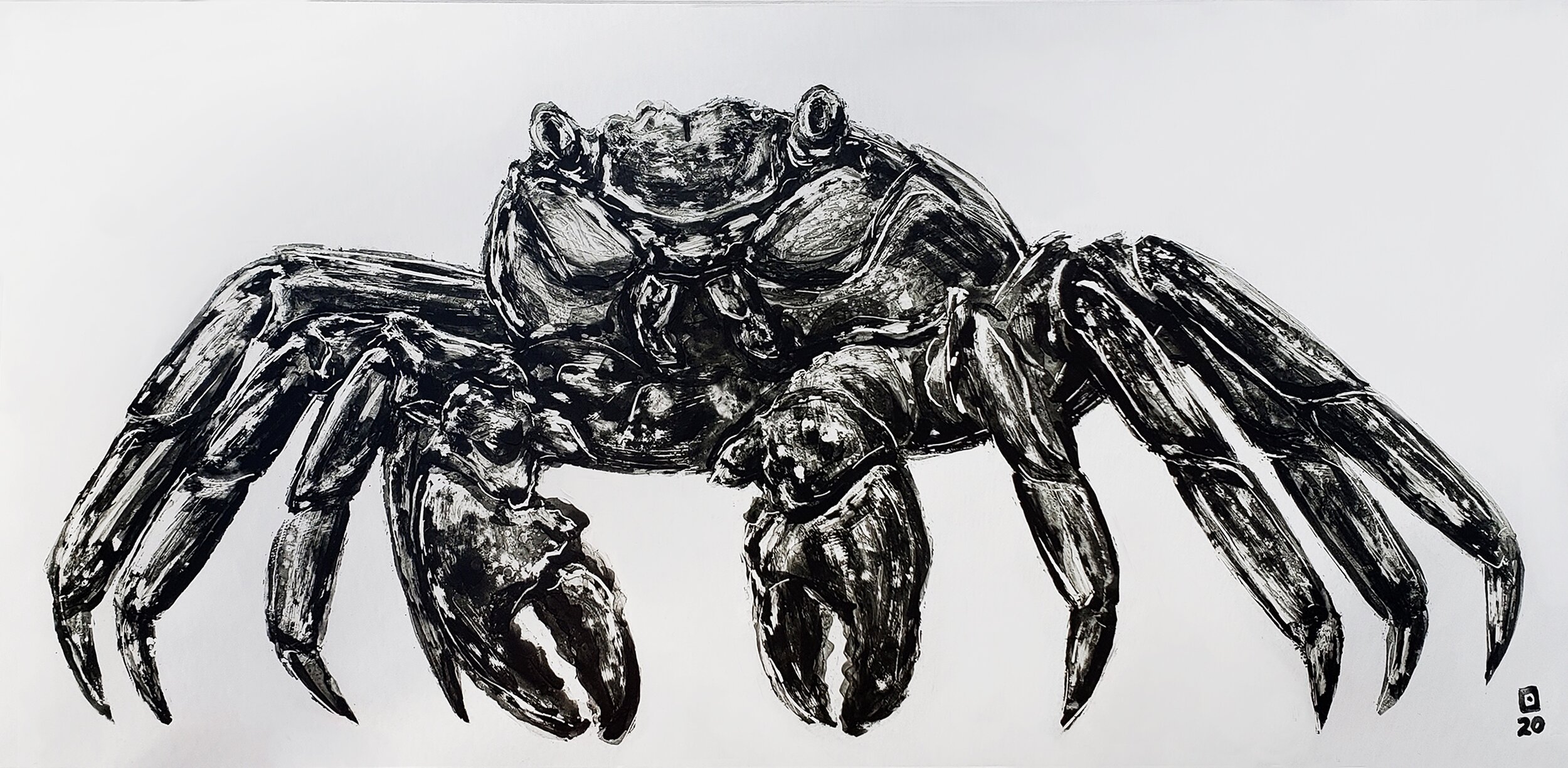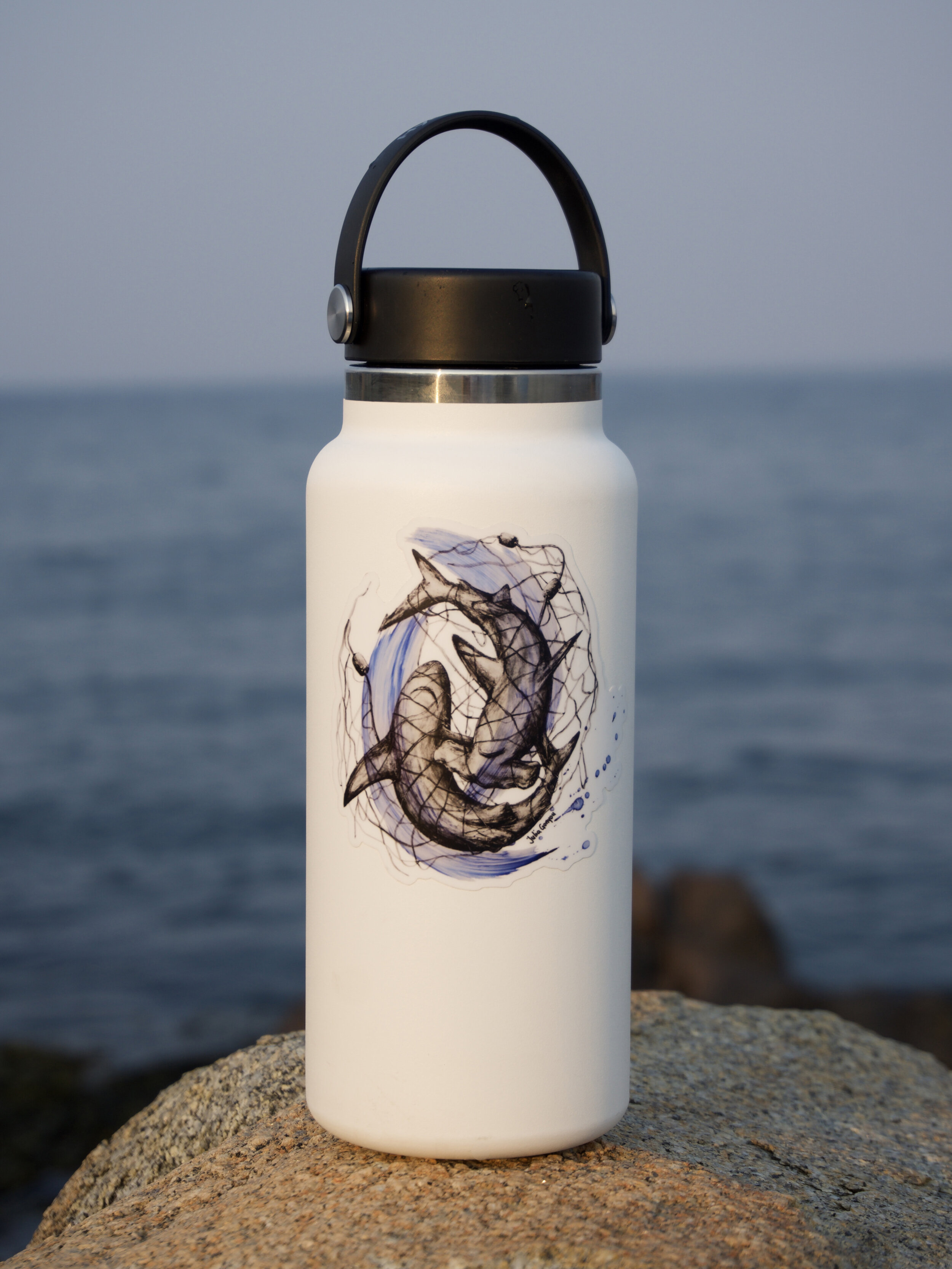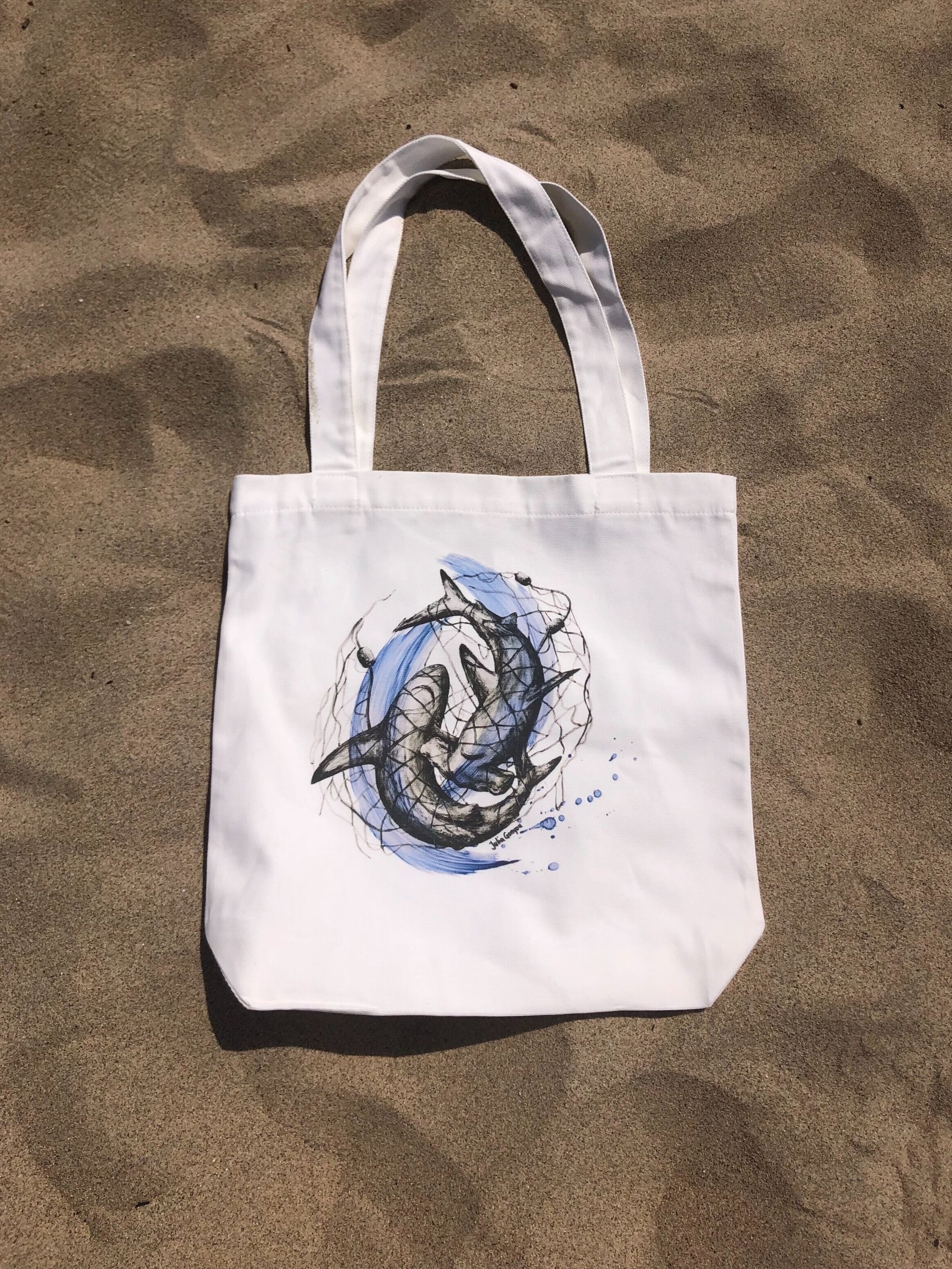Art for Activism: Julia Gonyou
Julia Gonyou is the artist behind ‘Tangled Up in Blue’, a unique piece that illustrates some of the biggest issues facing sharks today: bycatch, overfishing, ghost nets and illegal fishing. The original piece was made on float glass with lead oxide and enamel paint. Through her work, Julia strives to portray our soulful responsibilities to nature and one another. Introducing our featured artist, Julia:
SC: Tell us about your journey to becoming an artist.
JG: Art and eco-justice have always been passions of mine. I knew other than maintaining a conscious lifestyle, that visual arts would be the best way for me to personally contribute to any cause and to better voice my environmental concerns.
SC: You use a variety of techniques in your work. Tell us a little bit about your methods and styles.
JG: In method and style, innovation is essential to my creative glass practice. Silvering, kiln forming and etching are a few of my specialities, though my passion remains glass painting. I strive to capture the essence and meaning of a subject and to represent more than just its literal appearance. I like to use a very fluid paint mixture to delicately and spontaneously manipulate textures and depth. Once these paintings are fired in a kiln they become permanent filters of light, used as architectural features or simply precious artifacts.
SC: Where do you get inspiration for your work?
JG: I find inspiration in genuine insight, seeing past illusions, by our intrinsic connection to nature, duality and the balance of opposites. In quiet times, as I relax, I recall the extortion of the wild and our conflicted psyche.
SC: What do you hope your pieces will convey?
JG: That one must nurture their own philosophical awareness and embrace our soulful and intellectual responsibilities to nature and one another. To empower ourselves and to help establish a sustainable environment and enlightened future.
SC: You've received many awards and acknowledgments for your work. What has been your proudest moment as an artist?
JG: I feel privileged to have won the Reflections of The Lord Mayor roundel commission in 2018. It was a great artistic challenge and opportunity to render my design in glass and to help select the winners for the following year. Other wonderful moments were when I traveled internationally to countries such as Austria, Italy, Australia and New Zealand to work and train in my trade! Honestly though, collaborating with Shark Allies has been a major culmination of my creative efforts and values to use art as activism!
SC: What inspired the ‘Tangled Up in Blue’ piece?
JG: When researching fishing practices and the animal trade in general, I was overwhelmed and pained by its brutality and its lack of compassion. ‘Tangled Up in Blue’ conveys just a small facet of unsustainable fishing, such as the abandonment of (ghost) nets. I hoped that this activist-orientated image would inspire sympathy for an otherwise feared animal and continue the dialogue as to why and how sharks are integral to healthy oceans.
SC: How do you think art can support conservation efforts?
JG: Art cuts deep, it connects with a more intuitive part of ourselves. It is a platform for thought, meditation and revelation. As a global community, we have come to expect and rely on visual communications. A common denominator perfect for engaging complex environmental issues.
SC: Are there any people (artists or otherwise) who you look up to?
JG: I love authentic periods in art, music and philosophy that challenge fundamental outlooks, explore novelty and that align with my core values. A few favorites include Expressionism, Impressionism, Surrealism, Jungian psychology, Sacred geometry, Reggae music, and of course Environmentalism.
SC: You spread awareness around many conservation issues, but you work on a different type of conservation too. Tell us about your stained glass conservation/ restoration projects.
JG: Stained glass conservation became an interest of mine because as much as it is relevant to learn the skills to create, one must learn the skills to conserve. For me it underlined, in the climax of our throw-away culture, the importance to work with natural materials that can be fixed and that have a timeless value. In addition, I found learning conservation provided me with hindsight, which has positively influenced my fabrication processes.
SC: Which of your pieces is your personal favorite and why?
JG: Throughout this interview are a few pieces that I particularly enjoyed creating, as I felt they successfully expressed the feelings I wanted to convey such as anguish, confusion and contemplation. Each painting generally focuses on one subject, emotion or state of consciousness, so I prefer to view them together, as an elaborate reflection of our multifaceted whole.
Julia’s ‘Tangled Up in Blue’ artwork is now available at the Shark Cafe shop. Speak up for sharks by taking the reusable tote to the beach or grocery store (also a great way to go plastic-free!), or add the sticker to your favorite water bottle, laptop or car window to make a statement.


